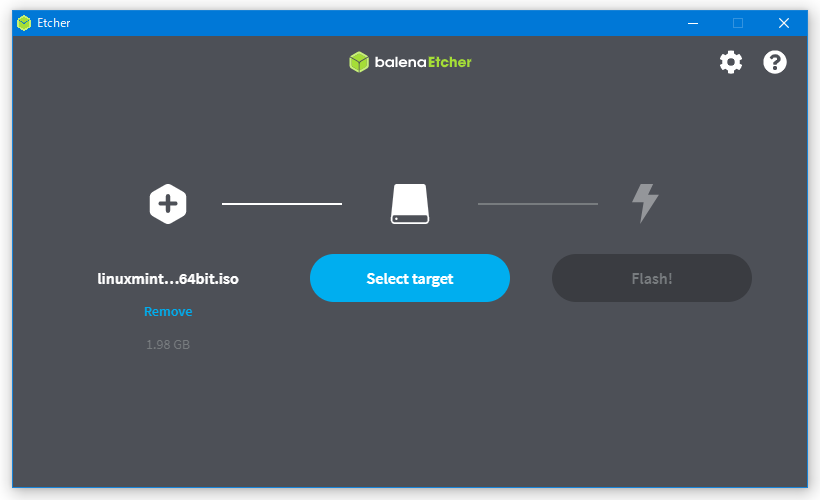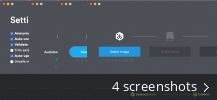

- #Balenaetcher software install
- #Balenaetcher software software
- #Balenaetcher software iso
- #Balenaetcher software windows
If you're the sort of person who is constantly flashing their system, balenaEtcher can be a great help.
#Balenaetcher software software
A very useful piece of software to add to your collection. And the great news is that it doesn't matter what platform you're using, as the program is available for Windows, Linux and macOS.īalenaEtcher win points for not only making flashing very simple, but also very fast. Point the app at an image you have – or you can even direct it to use one that's online – select the drive you'd like to use, and let balenaEtcher work its magic. The strangely named balenaEtcher serves as a user-friendly alternative, give you an easy and attractive way to flash images to either USB drives or memory cards. This is not only off-putting to many people, it introduces the likelihood of problems because of typos or other issues. There are various ways you can do this, and many of them involve using a command line of some sort.
#Balenaetcher software iso
Depending on what exactly you're doing, you may be able to get away with working with an ISO image directly – such as in the case of installing an operating system to a virtual machine – but there are time when you definitely need to create installation media using an image file. Developed by balena, balenaEtcher changed its name to just Etcher when a similar software called Resin.io changed its name to balena in 2018.
#Balenaetcher software install
This is not the case as the drives can be fixed, but it would be nice if balena addressed this issue by providing some kind of tool for restoring a drive to its original state.Whether you're working with Windows, Linux, Raspberry Pi or some other operating system, you've possibly used image files to install an operating system. Etcher, or balenaEtcher is a free software that through the use of simple UI enables users to write image files like.
#Balenaetcher software windows
Now when I check my drive in Windows it appears as it should one large partitions with (almost) the whole capacity of the USB available.Ī lot of people have written on the balenaEtcher forums about this problem, blaming the software for destroying their USB drives.

For good measure I thoroughly formatted the drive a second time using the option in the File Explorer menu system. Once I deleted any existing partitions I created a new partition from the unallocated space, with an NTFS filesystem that is visible in Windows as well as Linux. You should take care that you are modifying the correct drive location! I used gparted, which comes already installed in Ubuntu, to remove all partitions on the USB drive, which for me was mounted at /sdb1/ The only way I found to “repair” my pen drive was by using a computer that was already running Linux, in my case Ubuntu. Windows is unable to see the partitions correctly and is therefore unable to remove them, or format the drive correctly. This is not really a problem until you want to remove Linux from the USB drive and start using it, once again, as a normal drive for transferring files etc. That’s because a bootable USB contains certain drive partitions with filesystem types that are not visible to the Windows operating system. It makes USB and SD card image burning as simple and fast. It is a nice Windows program that simplifies the process of creating Linux disks and is recommended by some Linux distro vendors.Īfter the program successfully writes a bootable Linux USB drive, the drive no longer appears correctly in Windows. balenaEtcher is a free and open-source image burner with support for Windows, OS X and GNU/Linux. Recently I used balenaEtcher to create a bootable Linux drive.


 0 kommentar(er)
0 kommentar(er)
